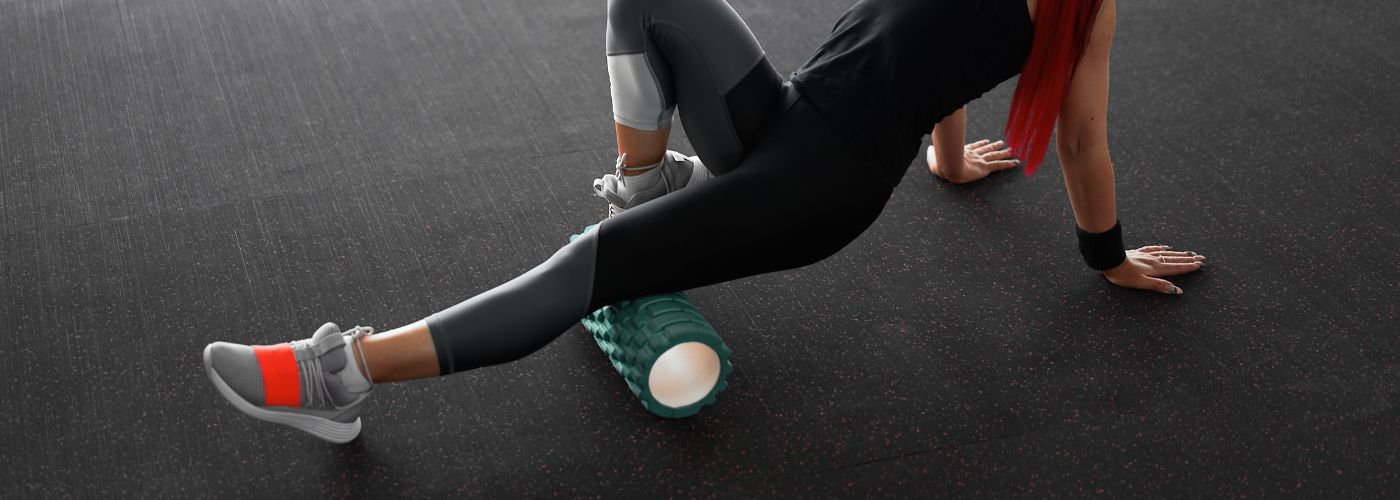Foam rolling has become a popular practice among fitness enthusiasts and athletes alike, thanks to its myriad of benefits for the body. Whether you’re a seasoned gym-goer or just starting your fitness journey, incorporating foam rolling into your routine can make a significant difference in your overall well-being!
Should You Foam Roll Before Or After A Workout?

One common question among those new to foam rolling is whether it’s more effective before or after a workout. The truth is that both timing options offer unique advantages. Opting for use before a workout can help increase blood flow to the muscles, promoting flexibility and range of motion. It’s like a prelude to your exercise routine, priming your muscles for the movements to come.
On the other hand, opting for after a workout serves as a valuable recovery tool. Offering some of the same benefits as a TENS/EMS device, it aids in reducing muscle soreness and stiffness by breaking down adhesions and knots that may have formed during your workout. This post-exercise application helps improve overall flexibility and accelerates the recovery process.
Ultimately, the choice between pre and post-workout foam rolling depends on personal preference and specific fitness goals. Some individuals may find a combination of both timings to be most beneficial!
Can You Foam Roll Too Much?

While foam rolling offers numerous advantages, it’s essential to strike a balance and avoid overdoing it. Foam rolling excessively on the same muscle group in a single session may lead to increased sensitivity and, in some cases, bruising. As with addressing extreme exercise soreness, it’s important to listen to your body and give your muscles adequate time to recover between sessions.
A general guideline is to spend about 10-15 minutes foam rolling, focusing on different muscle groups during each session. If you’re unsure about the frequency, start with a couple of sessions per week and adjust based on how your body responds. Remember, the goal is to enhance recovery and flexibility, not to cause additional stress to your muscles.
Should You Foam Roll A Strained Muscle?
Foam rolling can be beneficial for strained muscles, but it’s crucial to approach it with caution. If you’ve recently strained a muscle, it’s advisable to consult with a healthcare professional before incorporating foam rolling into your recovery routine, as more specialized care such as electrotherapy or other treatments may be better suited for your specific situation. In some cases, foam rolling may exacerbate the injury or cause additional discomfort.
If given the green light by a healthcare professional, start with gentle and slow foam rolling on the surrounding muscles, gradually working your way towards the affected area. Focus on maintaining a steady breathing pattern and avoid putting excessive pressure on the injured muscle. Always prioritize your health and well-being, and consult with a professional if you have any concerns.
What Size Foam Roller To Get
Choosing the right size foam roller is crucial to ensure effective and comfortable use. Foam rollers come in various sizes, and each size serves a specific purpose.
For beginners, a standard medium-density foam roller with a length of 36 inches is a good starting point. This size provides versatility for targeting various muscle groups and is generally suitable for most individuals. If you prefer a more intense massage, you can opt for a smaller and denser foam roller.
If you’re frequently on the go, consider a compact foam roller, usually around 12 inches in length. These are convenient for travel and can easily fit into your gym bag.
In conclusion, the benefits of foam rolling are undeniable, whether you choose to incorporate it before or after a workout. Just remember to strike a balance, be mindful of your body’s signals, and choose the right size foam roller for your needs. With consistent and proper use, foam rolling can be a valuable asset in enhancing your flexibility, reducing muscle soreness, and supporting overall muscle health.

Related Stories
Summer Olympics Legacy: From Past to Paris 2024
The 2024 Summer Olympics in Paris are set to be an amazing celebration of tradition,
Jul
Top Device For Neck & Back Massages
Are you tired of constantly battling neck and back pain after a long day at
Jul
Best Low Impact Workouts For Back Pain
Are you tired of dealing with back pain that seems to flare up every time
Jul
How To Use TENS Socks For Peripheral Neuropathy
Imagine being able to treat the tingling, numbness, and pain associated with peripheral neuropathy without
Jul
Maintenance Tips For TENS Unit Gel Pads
As you settle in for a soothing session with your TENS unit, the last thing
Jul
Tech-Powered Holistic Therapy with HiDow
July is Holistic Therapy Month, a time to celebrate practices that nurture the mind, body,
Jun